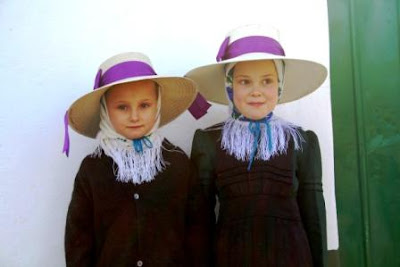
Take a second to read: most Mennonite related internet searches land on this article. Laura and I are hapy that our essays continue to provide faithful information about the least visited and most remote cultures on Earth. But please, if you find this resource useful , keep us travelling the world and reaserching by donating towards our project. Find the ay Pal button on the barside.
We arrive to Pedro’s house, and after a tour of their carpentry, we are shown the traditional cheeses. We enter a small room where also two large pieces of jam are being stationed, and choose a couple of oregano and pepper cheeses we buy from them. Pedro invites us to drink mate with his family. It is our first chance to enter a Mennonite house. The excuse for socializing is quite Argentinean; the bizarre social situation we are about to live is rather unclassifiable.
.
The first impression on passing the simple wooden door is that we were not expected by Pedro’s family, who immediately order two of their daughters to sweep the wooden floor. A compact legion of blonde kids is chewing and spitting sunflower seeds, almost in consonance. When I remark how much they seem to like the seeds Pedro’s explanation is: “Well, it is Sunday”. So in Sunday everything that’s otherwise banned during the week seems to be tolerated. And sunflower seeds are the closest to a forbidden snack children can crave for.

The two teenage girls prepare the mate while their mother swings quietly in a rocking chair by the window. The woman is huge like a Russian matrioska. You would bet there are several layers of women inside… None of the women take part of the conversation, which rather have Raul (my friend), Pedro, Pedro’s father, and me as participants. Even if the girls would like to talk, they are not taught Spanish. The father is a lightly built man with square glasses and a broad forehead. He makes me several questions about Germany, a country that I have visited several times, and which is where the Mennonite’s gene pool comes from… The man is kind and low paced in all his way of being and talking. I talk to him in German and we understand each other despite speaking different dialects. They all have a lot of fun when I take their Bible and start reading –without understanding everything- a short bit…
I ask the man for the names of his children, and he names only the boys. The girls, both the tiny ones chewing seeds and the teenage ones coming and going with the mate, remain anonymous. In this context, I can imagine the girls have no further life prospects than becoming children factories and seating by the window as their mother. There is no chance of getting to the “outside world” to work or study.

A dilemma emerges. Must the estate interfere in order to guarantee certain contents in education? Can family and community exclude the instruction of the language needed to be a free person in Argentina? I mean, is it fine that girls here speak medieval German and couldn’t even take a bus if they dared to, while men are bilingual? Schools have always been factories of mentalities, from the times of Sarmiento to nowadays. They have been widely used to displace the native tongues prior to the Conquista and homogenize population. Bilingual education has normally arrived too late. It happened with Irish, and also with quechua. Will it come the day when prohibition of prohibition becomes a part of universal ethics? Tht day Iranian girls will have the chance to walk unveiled, and Mennonite ones will be taught Spanish. The systems that now try to protect themselves by coercing individuals to act this or that way will only be legitimized when they become optional. We leave Pedro’s house and 30 kms later we are having a beer in one of Guatrache’s bars, wondering if everything was real or if we have just dreamt it.
















